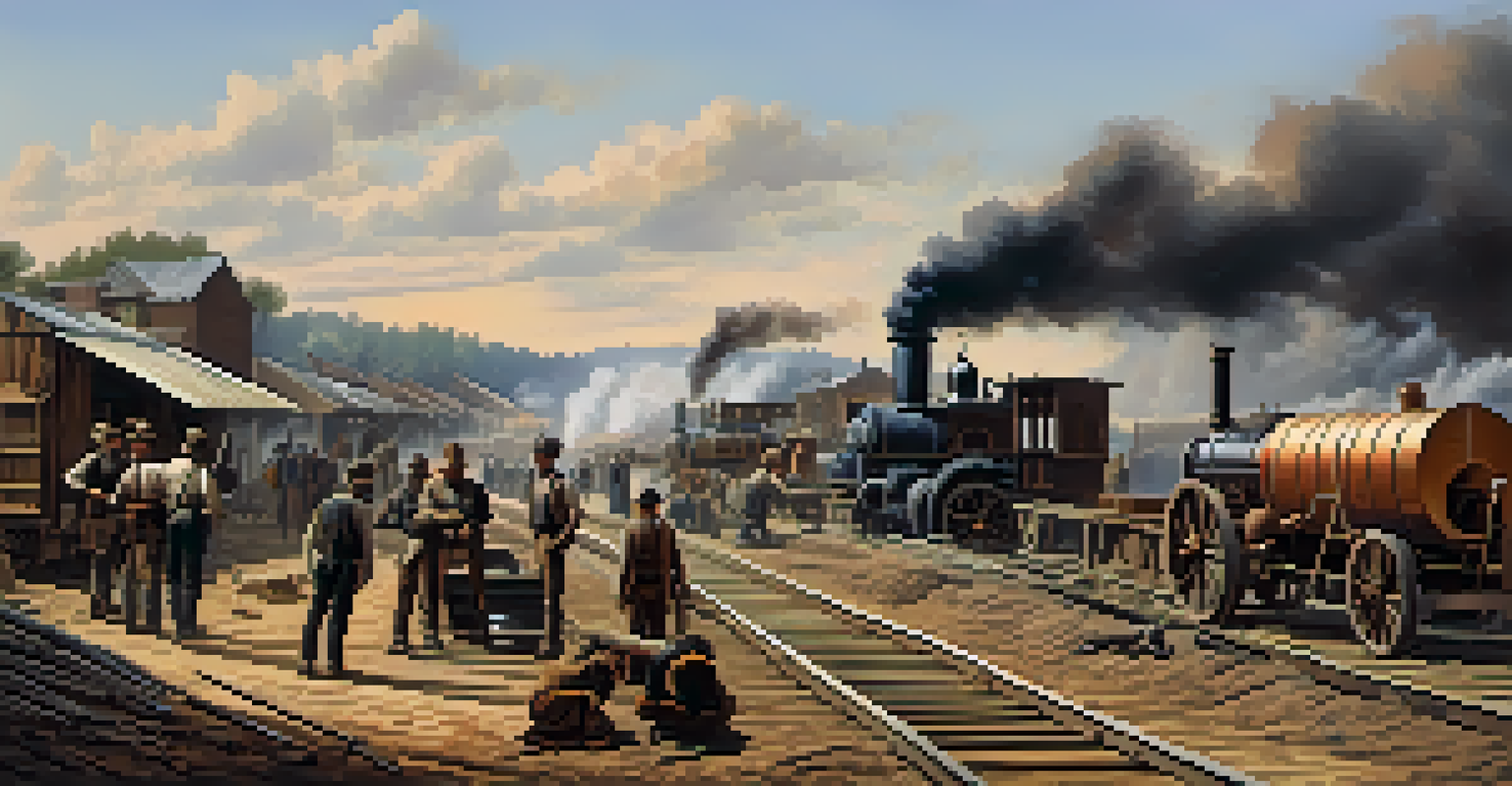The Birth of Atlanta: The Role of the Western and Atlantic

The Historical Context: Pre-Railroad Atlanta
Before the railroad came to town, the area that is now Atlanta was a quiet, undeveloped region known as Terminus. Established in the early 1830s, it was a simple crossroads where multiple paths converged, but it lacked the vibrancy and population that would later define it.
The railroad is a great moralizer. It brings together men of different races and different ideas, and makes them work together.
The economy was primarily agrarian, with local farmers relying on horse-drawn carts for transport. This limited movement stifled growth, as goods and people struggled to travel beyond their immediate surroundings.
However, the seeds of transformation were sown with the idea of a railroad, which promised to connect various regions and facilitate trade, setting the stage for what would become a bustling city.
The Arrival of the Western and Atlantic Railroad
The Western and Atlantic Railroad (W&A) was chartered in 1836 with the ambitious goal of linking Atlanta to Chattanooga, Tennessee. This was a game-changer, as it opened up new avenues for commerce and travel, positioning Atlanta as a central hub in the region.

Construction began in the late 1830s, and the community rallied around the project, investing time and resources to see it through. The completion of the line in 1850 marked a significant turning point for the area, as it began attracting businesses and settlers eager to take advantage of the new transportation routes.
Railroad Transformed Atlanta's Economy
The arrival of the Western and Atlantic Railroad revolutionized trade and commerce, turning Atlanta into a thriving economic hub.
With the railroad in place, Atlanta quickly evolved from a mere crossroads into a thriving town, laying the groundwork for its future as a major Southern city.
Economic Growth and Opportunities Emerge
The W&A Railroad spurred economic growth by facilitating trade, enabling farmers to transport their goods more efficiently. This newfound access to markets led to an increase in agricultural production and sales, which benefitted the local economy significantly.
Transportation is the backbone of a city; it connects people and resources, shaping the very fabric of urban life.
As businesses began to establish themselves along the railway, more jobs were created, drawing people from rural areas into the city. This influx of workers not only boosted the economy but also fostered a diverse community as different cultures mingled.
Ultimately, the railroad transformed Atlanta into a commercial center, attracting industries like manufacturing and shipping that would play pivotal roles in its development.
Civic Infrastructure and Urban Development
With economic growth came the need for improved infrastructure. In the years following the arrival of the W&A, Atlanta saw the construction of roads, bridges, and buildings that would support its growing population and commercial activities.
Public amenities such as schools, churches, and parks began to emerge, reflecting the community's aspirations for a better quality of life. The presence of the railroad also influenced urban planning, as developments clustered around train stations to capitalize on the influx of visitors and goods.
Civic Growth Fueled Urban Development
Economic expansion led to the construction of essential infrastructure and public amenities, shaping Atlanta's urban landscape.
This proactive approach to urban development laid the foundation for Atlanta's future growth, making it a model for other cities in the South.
The Role of the W&A in the Civil War
During the Civil War, the Western and Atlantic Railroad became a strategic asset due to its importance for troop movements and supply lines. Control of the railroad was vital for both the Confederate and Union armies, making Atlanta a significant battleground.
The city's location, with its railroads radiating in multiple directions, meant that whoever held Atlanta could influence the outcome of the war. This led to intense military campaigns, including the famous Siege of Atlanta in 1864.
Despite the devastation, the railroad's resilience played a crucial role in the city's recovery post-war, proving its enduring significance in Atlanta's history.
Cultural Impact: Atlanta's Identity Formation
The influx of people and ideas facilitated by the W&A Railroad contributed to a rich cultural tapestry in Atlanta. As diverse communities settled in the city, they brought their traditions, food, and customs, enriching the local culture.
This blending of cultures helped shape Atlanta's identity, leading to the development of its unique Southern charm mixed with influences from various regions. Festivals, music, and art flourished, creating a vibrant cultural scene that drew people in.
Cultural Diversity Enriched Local Identity
The influx of diverse communities through the railroad fostered a vibrant cultural scene, contributing to Atlanta's unique identity.
As Atlanta grew, it became known not just for its economic vitality but also for its cultural significance, laying the groundwork for its reputation as a city of innovation and creativity.
The Legacy of the Western and Atlantic Railroad
Today, the legacy of the Western and Atlantic Railroad is evident in Atlanta’s status as a major transportation hub. The initial tracks laid down in the 1830s have evolved into a comprehensive network that supports both freight and passenger services.
Moreover, the historical significance of the W&A is celebrated through various landmarks and museums that tell the story of Atlanta's growth and resilience. This legacy is a reminder of how transportation infrastructures can shape cities and communities.

As we reflect on Atlanta's journey, it’s clear that the Western and Atlantic Railroad was more than just a means of transport; it was the lifeblood that fueled the city’s birth and development into the vibrant metropolis it is today.